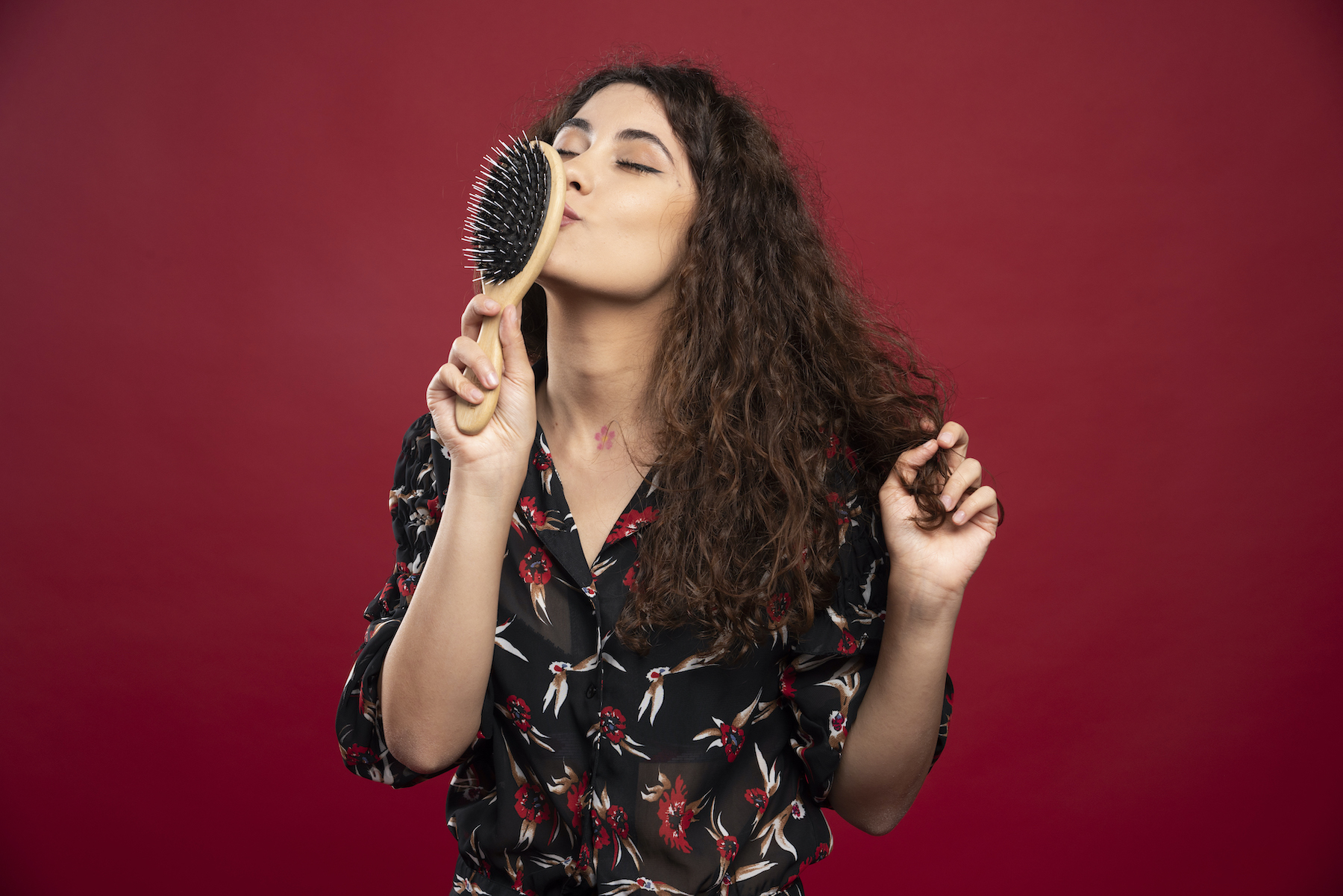We all want beautiful hair.
Having shiny, strong, supple hair is synonymous with good health, vitality and well-being in the broadest sense. It's not just a question of self-esteem and appearance. Hair is a reflection of our physiological and psychological health. That's why it's so important to take care of it and to be able to identify any imbalances at the very first signs so that they can be remedied quickly, such as flat or dull hair, hair that falls out too much,...
However, as part of an effective hair routine, we tend to favour rather sophisticated specific care products, adapted to our hair type: fine hair, curly hair, Afro hair, coloured hair, etc. This is all very well, but in doing so, we tend to neglect an essential first step which, if carried out properly, can completely improve the quality of our hair. What is this essential step that is all too often ignored? Brushing!
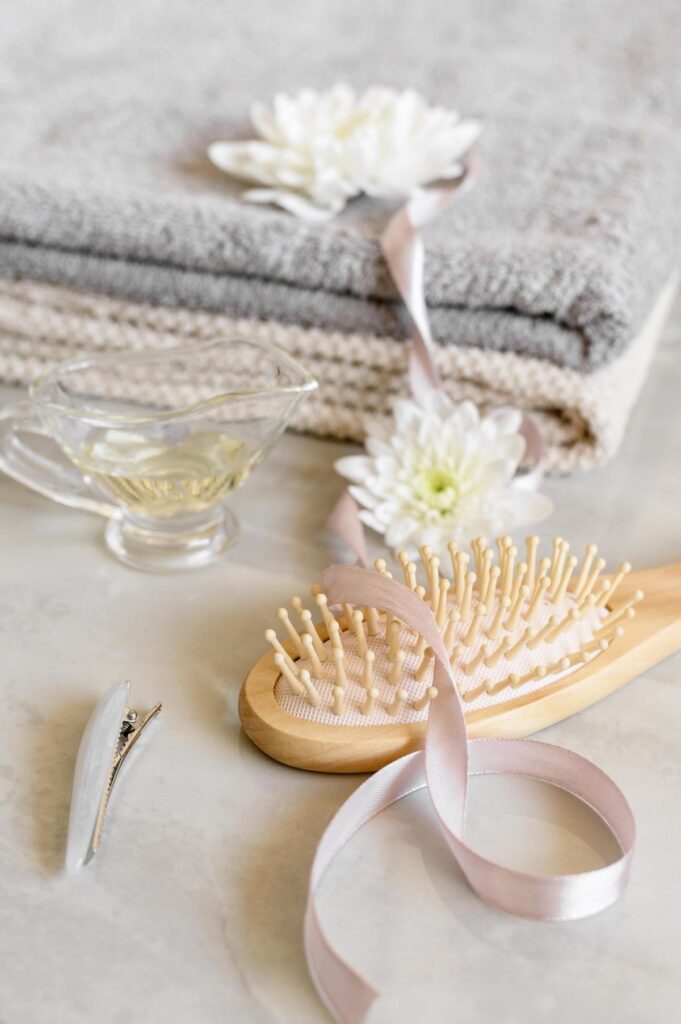
Taking care of your hair starts with brushing
Beyond the technique of brushing, it's legitimate to wonder about the right frequency of brushing if you want to avoid losing your hair (too much). Should we still believe the old adage of brushing 100 times a day to keep our hair looking good?
At Clauderer, we often hear our customers tell us that they space out their brushing for fear of losing even more hair - just like those who space out their shampooing. It's true that seeing a mass of hair pile up on the brush every day can be frightening, and you'll want to avoid repeating this trauma on a daily basis.
What are the benefits of brushing your hair properly?
Gentle brushing adds shine to your hair by smoothing the cuticle (the outer layer of the hair), giving your hair that luminous, silky effect - the famous 'liquid hair' effect that many stars are sporting at the moment. You can also add volume to fine hair by styling it from the roots to the ends, upside down.
Effective brushing cleanses the hair and scalp. It removes hair in telogen phase, dead skin cells, chemicals and other residues that become embedded in your hair. If you don't do this regularly, bacteria have free rein and can clog pores and capillaries.
Another benefit of successful brushing is that by stimulating the capillary vessels, blood circulation is improved and the hair is supplied with the oxygen and nutrients it needs. Strengthened in this way, and better nourished from the inside out, hair is more likely to grow fast and healthy.
Brushing your hair stimulates the sebaceous glands located in the epidermis. Brushing helps to distribute this protective film - provided the sebaceous glands are working properly! (A little information on greasy hair) from root to tip. The result? Stronger, more resistant, less dry and shinier hair. Without brushing, sebum will stagnate and your scalp can become oily, leading to dandruff, for example.

Successful brushing, beautiful hair guaranteed!
What happens when you brush (or comb) your hair?
- the brush or comb has a mechanical effect on hair in the telogen phase (cf. hair life cycle): nothing serious, these are hairs that have already separated from the hair follicle, they are bound to fall out sooner or later and - if all goes well - new hairs are already "in the starting blocks" to replace them.
- if the brush is unsuitable (bristles too tight, material, etc.) there is a high risk of pulling out live hair. If you repeat the same gesture every day, or even several times a day, there's no doubt that thinning areas are likely to appear.
- Be careful not to confuse breakage with hair loss. All too often, brushing causes breakage: tangled hair forms knots - especially as it thins - and pulling to "force the way through" will inevitably break the hair fibre where it is already weakened (thinning, curls...).
How can you turn brushing into a real beauty treatment for your hair?
1) Choosing the right brush or comb
Choose a model that matches the length and thickness of your hair, the sensitivity of your scalp and the style you like to wear.
- A paddle brush is a wide, flat brush that detangles and softens most hair types.
- Round brushes are used for blow-drying
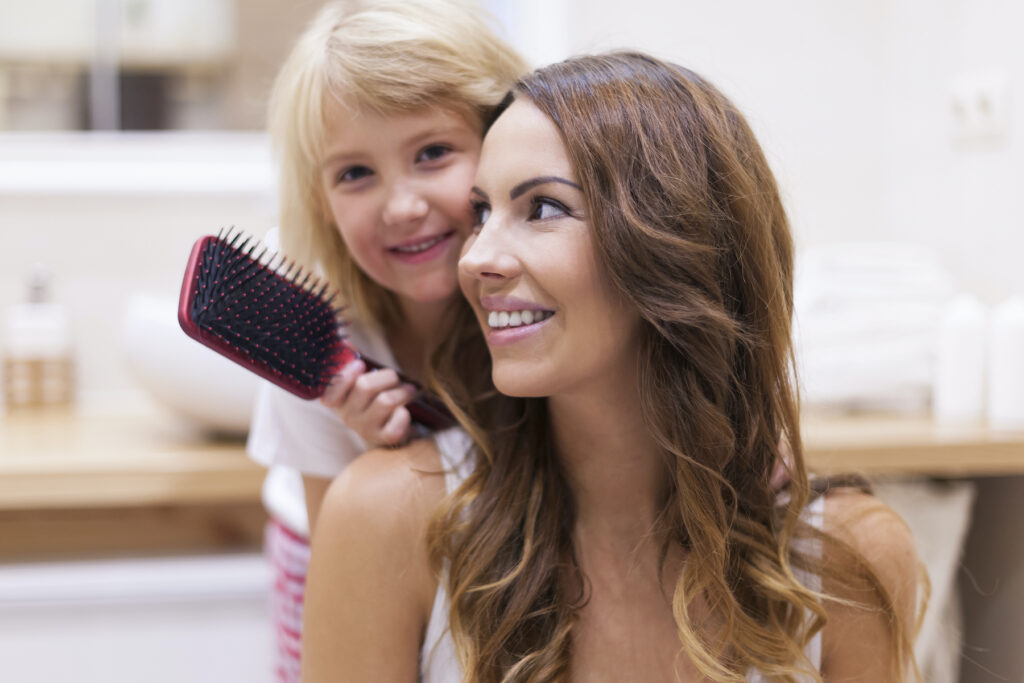
The paddle brush, efficient and versatile
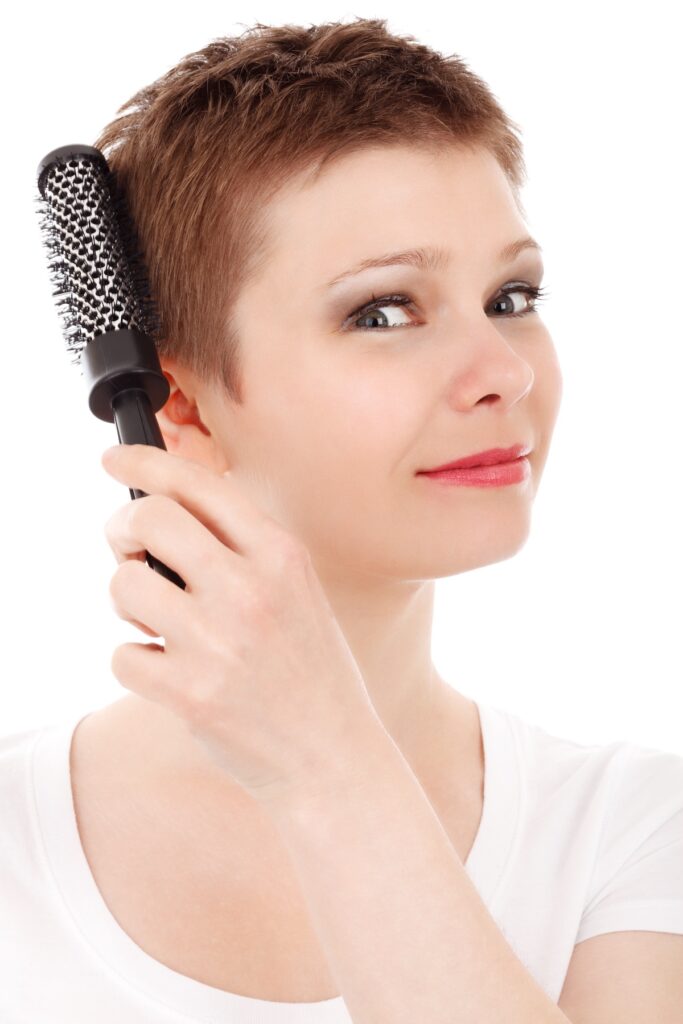
Adapt your brush to your haircut and hair type
- If you have short or very fine hair, it's best to use a finer brush with soft bristles.
- A natural bristle brush is versatile, soft and gives a smooth, shiny finish. Experts swear by boar bristles. Nylon bristles work well for detangling, but they can pull and are therefore only recommended for thick hair. Sometimes a mix of natural and nylon bristles is the best solution.
- If the brush has a rubber pad, its bristles will adapt to the shape of your skull.
2) The right gestures for your hair type
As a general rule: start with the tips, then the lengths and finally the roots.
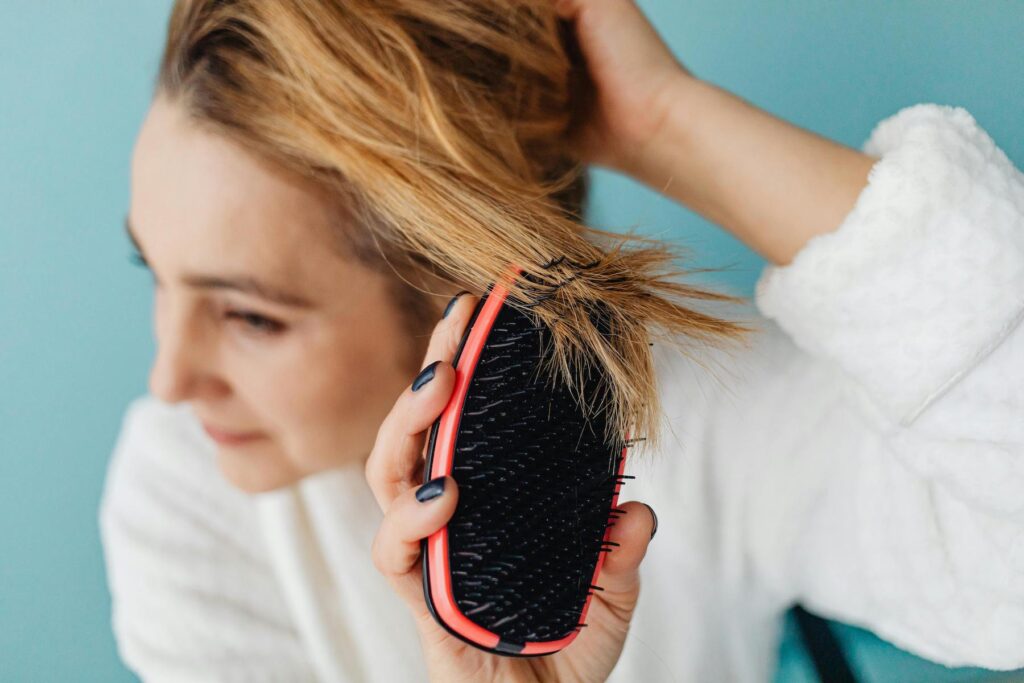
From tip to root
In practical terms, we start by brushing the ends of the hair to remove the most important knots. Then untangle the lengths and gradually work your way up to the roots.
- Curly, textured, frizzy, very frizzy hair... but this is also the case for chemically-treated hair (straightening, straightening, colouring) or heat-treated hair (dryer, straightening plates, iron).
If you have curls or a lot of texture in your hair, it's best to brush it while it's still wet or damp. We don't recommend detangling your hair while it's dry. Dry hair resists the action of the brush or fingers trying to separate it. You run a high risk of causing a lot of breakage if you untangle your hair in this way. Finally, avoid sleeping with your hair loose, as this encourages knots. Instead, braid your hair before going to bed so that it's in good condition when you wake up. The right gestures and a suitable routine will prevent your hair from becoming too tangled.
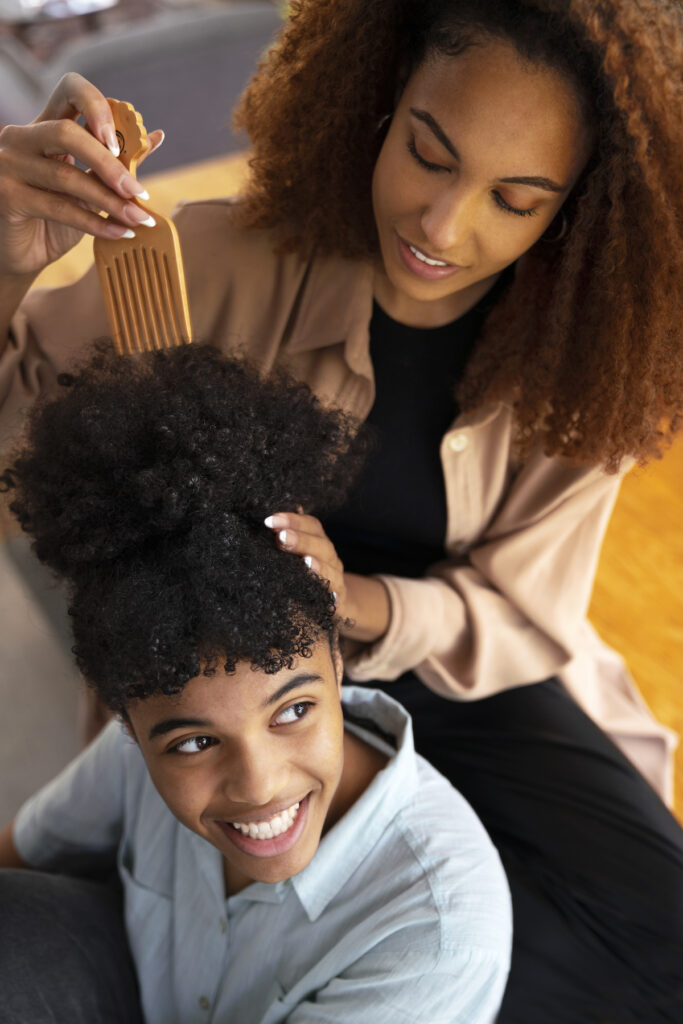
- Straight or flexible hair
In this case, never brush your hair when it's wet. Wet hair is weakened, elastic and breaks easily.
- Try to style and handle your hair as little as possible when it's wet.
- If you really need to, use a wide-tooth comb while you still have conditioner. Start at the bottom and work in sections, working your way up to the roots.
- Don't rub your hair with a towel - it's too rough and will cause tangles. Instead, twist your hair with your hands. Let it air dry or wrap a towel around it. Wait until it's almost dry before styling.
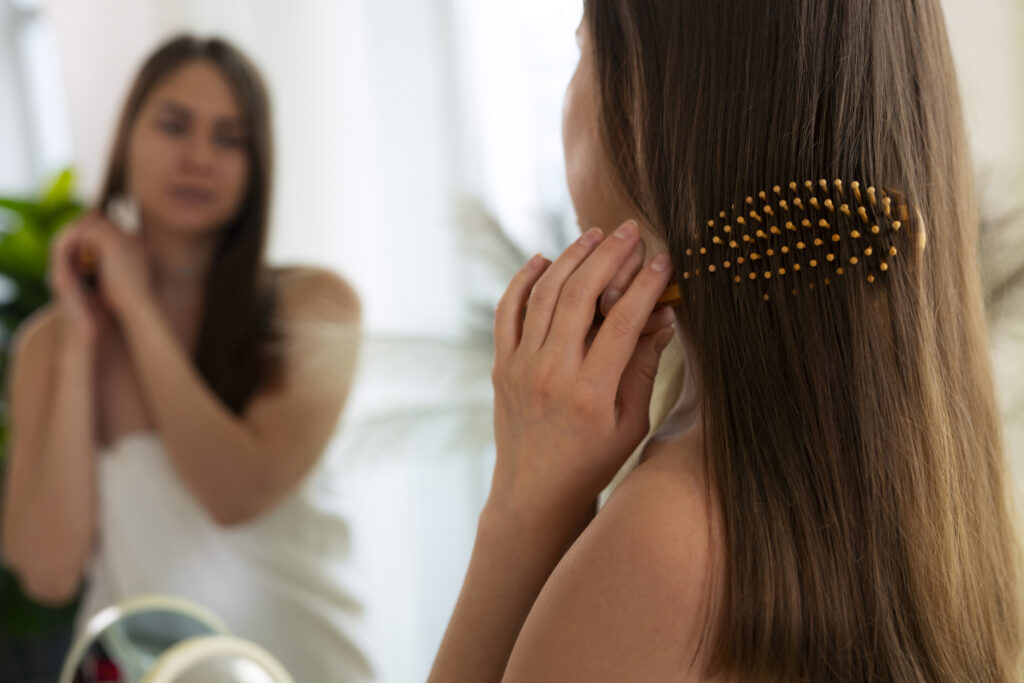
3) Knowing when to stop
We recommend brushing your hair once or twice a day, in the morning when you wake up and in the evening before going to bed. This beauty routine allows the hair to breathe, stimulates blood circulation and therefore encourages hair growth. But once your hair is well detangled, you can stop brushing to avoid damaging it too much. By the way, a study (published a few years ago showed that limiting the frequency of brushing could have a positive impact on hair loss.
And we won't forget! For obvious reasons of hygiene, it's important to keep your brush clean. Remove the hair from the brush and wash it at least once a month to remove oils, cosmetics, dust and other impurities. Use warm water and a little shampoo or soak your brush in a small basin of warm water with baking soda before rinsing. Replace your brush as soon as the bristles start to fall out.

